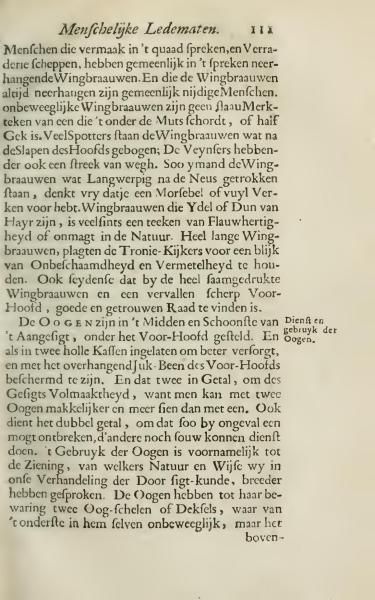Human Limbs
People who take pleasure in speaking evil and scheming treachery often have drooping eyebrows when they speak. Those whose eyebrows are always drooping are generally seen as envious individuals. Immovable eyebrows are not clear signs of one who conceals under a cap or is half-crazy. Many mockers bend their eyebrows towards the temple of the head; hypocrites have them pulled aside. If someone has eyebrows slightly drawn towards the nose, it is usually thought that they are deceitful or foul. Eyebrows that are thin or scant are often signs of weakness or impotence in nature. Very long eyebrows were once considered a look of shamelessness and arrogance. It was also said that one with compressed eyebrows and a sunken forehead would have good and faithful counsel.
The eyes are in the center and are the most beautiful part of the facial feature, under the forehead, situated in two hollow cavities to be better protected, covered by the overhanging cheekbone of the forehead. They are two in number for visual perfection, as it is easier and more effective to see with two eyes than with one. The use of eyes is mainly for sight, understanding their nature and manner, which we have discussed in the treatise on perspective. The eyes have protection with two eyelids, the lower of which stays immovable, while the upper can move...
Translation Notes:
- 'Wingbraauwen' translates to 'eyebrows.'
- 'Tronie-Kijkers' could be interpreted as 'face-observers' or 'gazers.'
- 'Onbeshcaamdheyd' can mean 'shamelessness.'
- 'Gck' is translated here as 'crazy' or 'mad.'
The text describes how facial features, particularly eyebrows and eyes, can reflect a person's character traits. Drooping eyebrows may indicate a deceitful nature, while immovable ones do not signify madness. The eyes are emphasized for their beauty and function in visual perception, protected and positioned under the forehead.
